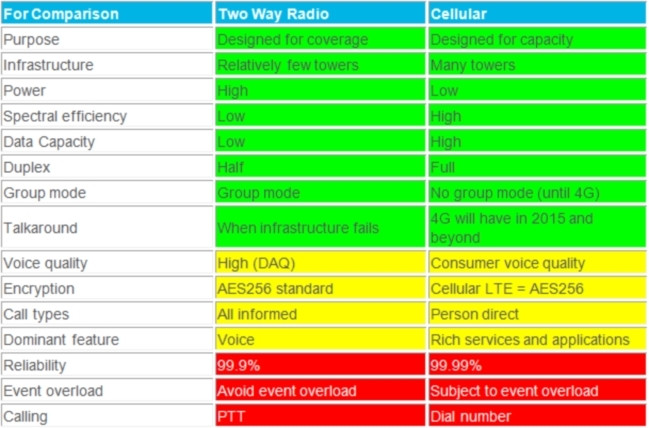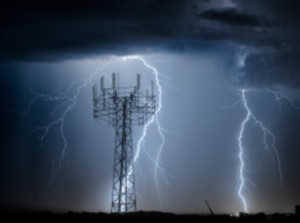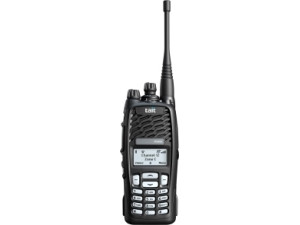There is ongoing debate on the topic of cellular versus radio communication for mission-critical communications - more so in the local government space, which is under pressure to deliver basic services in often remote areas with limited communication services. Indeed, nothing seems better designed to polarise opinion.
Emcom's Business Development Manager, Tony Sipho Sibanda, compares the performance of cellular and radio for mission-critical comms, and concludes it's not as simple as it seems.
The first thing you notice about the debate is the misinformation - it's not easy to nail things down simply.

So let's start with some important points of comparison.
There are some clear differences, like the fact that Radio uses fewer towers, requires higher power and has a larger effective range. These are coloured in green. Yellow features are a bit more controversial, while those in red are hotly disputed or frequently misunderstood. It is these that we will explain further here.
Reliability and event overload

We have all experienced cellular systems apparently failing. Usually this is call drops at the edge of coverage but during times of extraordinary high use such as natural disasters, they also seem to fail. Or do they?
Technically, cellular systems are designed to 5x9s or 6x9s reliability, which exceeds normal radio standards by some margin. So the issue is not that cellular systems are less reliable technically. It's all about perceived reliability.
What a user experiences is a combination of effects:
* The cellular system is a commercial operation that delivers service on that basis. Radio is designed for mission critical use, with short bursts of guaranteed connectivity. Comparing their reliability to that of cellular systems is not straightforward because of the different purpose.
* When we lose a cellular call, often it's a result of a 3G cell 'breathing' its coverage due to loading and failing to hand off your call to an adjacent cell. With radio there is no concept of a 'cell', you either get access or you don't.
Cellular systems seem to fail during natural disasters. Quite apart from the extreme load on public systems during events, natural disasters frequently destroy infrastructure. Radio survives these events better than cellular. For example, a disaster usually affects quite a small region in the context of a radio system. Statistically, the fewer radio towers will end up surviving better than the larger number of cellular towers. This also gives radio an advantage when power is disrupted, since refuelling a smaller number of radio backup systems is often easier and faster.
Radio systems are effectively circuit switched so you get exclusive access to some resource for a short period. This precious resource can also be consumed fully in an emergency, so radio can be overloaded too.
On balance then, radio seems a better bet for critical communications in a disaster. But this does not mean that a cellular system is unreliable - it comes down to what service it is designed to deliver.
Push to Talk (PTT)
PTT is the reason radio systems exist, and is a very effective way for a dispersed group of people to stay in touch with central dispatch and each other. All-informed group modes reflect the standard operating procedures (SOPs) of mission-critical agencies.

Using it correctly demands some process. The system works best with short, coherent exchanges - long rambling conversations are not ideal. Radio delivers near real-time PTT. This is an important feature for safety and operational efficiency in mission-critical operations.
Of course, radio systems provide a lot more than voice, and with GPS, can easily be used for location monitoring. Many lives have been saved through the "Emergency" button.
Voice was originally the reason that cell phones existed, but the iPhone changed that. While advanced data services existed well before Apple ventured into the phone business, the combination of a powerful mobile processing platform coupled with an innovative user interface changed the landscape forever.
Ironically, it is the modern smartphone's visually-rich display that can get in the way of mission critical communication. Our eyes are drawn to the display and we need both hands to operate the touch screen. This is the very reason the use of cellphones in cars is restricted. Cellular technology created another pathway for PTT but using the original carrier core voice system proved difficult to match the speed of radio, and all-informed group calls proved challenging.
In 1994 Nextel-Sprint released iDEN, which combined the benefits of Radio and cellular and also gave each handset its own IP-address. iDEN could achieve a call setup and volley time close to radio. By comparison VOIP (Voice over IP) systems of that time were hopelessly slow - with 5-10 second setups and 2-5 second volley times. Modern cellular systems provide the data bandwidth to deliver an effective standards-based VoIP PTT solution. A big benefit is that users do not waste expensive airtime minutes and in the era of unlimited data plans, agencies could implement low cost dispatch systems.
A bigger advantage is re-use of existing, inexpensive cellular handsets. Rich user interfaces on smartphones continued to drive this by adding features not easily possible on radio, such as simultaneously following and recording different groups from anywhere on the Web. Shifting calls from the analogue domain into digitised packets has allowed a vast array of added features, although not all suit mission-critical users.
On balance, PTT for mission-critical communications seems better on a purpose-built device because it has a simple interface (a button) that you can use without taking your eyes or hands off your task.
However PTT delivery would be more valuable if it can work seamlessly over different bearer pathways and may in fact give more resilience than PTT on radio.
The other critical aspect of deploying smart phone technology that needs attention for mission-critical users is the way users interact with the device. In a critical situation, officers can't be expected to take their hands and eyes off their task to operate the device.
Adapting hands-free interfaces will make smartphones come very close to a purpose-built Radio without even starting to consider the richer functionality and applications you can use them for. So a narrow win for radio, with the realisation that a re-run of the race may tell a different tale.
Cost to deploy and operate
One key question that often comes up then becomes, which of the two options is cheaper to deploy and operate. Due to relatively good cellphone penetration in most urban areas, no doubt, it is quicker to purchase a few cellphone handsets and hand out to users for immediate use without the task of identifying high-sites, coverage predictions and designing a network. From a greenfield view, however this argument turns over completely. The cost of smartphones is very comparable to the cost of Radio terminals in this age we are in today. The base station or high site infrastructure, one could argue is similar and not too different in cost either, unit for unit. However, the fact that radio coverage off a high site is multiples better than that off cellphone towers makes the network establishment cost of radio that much cheaper to deploy as you require fewer towers for radio over an area of coverage than you would for cellular Then again, remember, most urban areas already have cellphone infrastructure present so this is not always a valid point.
Operational costs month on month are what swing the argument in favor of Radio in this subject. Once established, there is virtually no cost for traffic over a Radio network, unlike in the cellular model where billing is based on call duration and size of data transmitted or received. This saving on operational cost to a large extent subsidises the deployment cost typically in a couple of years, creating an asset of immeasurable value in the long term.
The durability of equipment is another hidden cost factor, often not considered in decision making. Radio is built for professional use and is rugged and can withstand the harshest of conditions. Smartphones, though slowly improving in durability, are still to get to a level where they can be considered tough enough to take into a battle zone and emerge unscathed. The radio, long term, will thus outlive the smartphone on the field, often by years.
The future
It would be easy to conclude that the future belongs to smart phones. In reality, the future will belong to improved mobile platforms that are engineered to fit specific needs. Future devices will build on what we have now in ways that will delight us, but we need to prove these new features in the heat of battle. It's one thing to love a feature in the showroom, but quite another to see how it works when lives may depend on it. This conservative view suits everyone, but if mission critical outcomes are important to you then a careful approach is needed.
The future belongs to devices that make us work smarter and which understand the mission critical context we operate within and help us like a mobile 'buddy'. Prudent operators will take advantage of evolving solutions that improve mission critical outcomes and avoid those things that add to the problems. So this has less to do with the cellular-vs-radio argument - in fact both can provide highly complementary outcomes.
So which is best?
Answering this seemingly simple question is, in fact, not so easy. It takes time to understand the context, the real user needs and where the technology is going. While radio has an edge right now for mission-critical communications, combining the best of both platforms will continue to give significant advantages. Other factors that will swing opinion in a decision forum is cash flow and capital outflow. For a cash thin service orientated organization like a municipality thinking on its feet, the illusion that a cellphone is cheap, is short-lived as the running costs will slowly bleed finances to a trickle over time and will not cease. Furthermore, industry has become a lot more creative and followed the ICT thinking of outsourced and managed infrastructure where most radio operators will design, deploy, support and even Finance a network. This allows the user to enjoy instant benefit of a fully-fledged, personalised mission-critical radio network and own it over time using operational expenditure that would have otherwise been consumed on a long running cellphone contract without the benefit of actually owning and managing the infrastructure.
Share